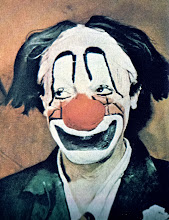A few days ago, an heiress lost her house to fire in Washington, D.C. The loss was virtually total. Among the "possessions" which this heiress lost was her "priceless" Art collection. This caused me to reflect upon this matter.
What made her Art priceless? It must have been the masterly composition of the various pieces. Also, there most probably was a scarcity of such works by such artists. Rareness tends to nudge Art objects toward the "priceless" category. Merit and scarcity, then, seem to be key elements in determining value. Also, there is the factor of cyclic changes in taste that affect demand for a given masterpiece. Being irreplaceable and a masterpiece would seem to elevate any Art work into the category of "priceless."
This heiress's loss may become mankind's gain.
The reason that led any given artist to devote his life to exploiting his talent for perception and rendering that perception into a finite, material objects is not knowable. It is highly unlikely that he devoted himself to an oeuve d'art to present to mankind as a beau geste. Artists seem to be - at a personal level - screwed-up and vain. Yet, if they were able to render visions that are universal, then their works by right of universality belong to mankind -- and not one person, however rich.
Further, as governments of the world have already instituted museums to house such universal works, governments should demand that "priceless" Art be placed in an appropriate museum, where they can be protected best from time, nature, accidents, war, and rich people. There is no site on Earth absolutely protected from man, when he is in a destructive frame of mind, but a well-planned museum is the best bet.
Ultimately, "priceless" Art will be accorded the label of vanity. Until such Final Judgment, let's protect these pieces from the rich investors' folly by giving them a proper home in a museum, not a mansion. Nor should such collectors be unduly compensated for their "priceless" Art. A note of "Thanks" discreetly placed by a painting, sculpture, or other piece, along with one year's free medical attention at a Veterans' Hospital should be adequate compensation. The latter may be traded for a "lump-sum" payout. It's a "win-win" situation.
August 1, 2009
Subscribe to:
Post Comments (Atom)

No comments:
Post a Comment